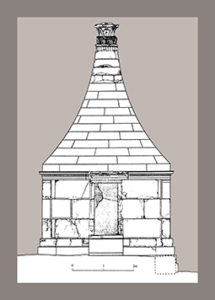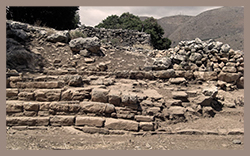Author: R. Sassu
Download article as .pdf: Morte e memoria. Osservazioni sulle sepolture di personalità eminenti in associazione a edifici ginnici e agonistici
In the framework of the topic concerning monumental tombs located within the urban space, outside the necropolis, a specific issue regards the identification of the spot where such edifices, exceptionally located inside traditionally forbidden areas, are built. The choice of associating the mausoleum to structures related to the concepts of glory and eternity is often expressed by the spatial and topographical connection between the sepulcher and structures devoted to sport and military training, as well as competition, particularly stadia and gymnasia, as testified by the case studies provided by Messene, Calydon, Miletus and Gortyn of Crete. The phenomenon – that usually aims to praise those who benefited the society through miliary or agonistic victories or euergetism acts by granting them an excellent tomb – is not restricted to the Hellenic world, but widely spread in the Roman provinces.


